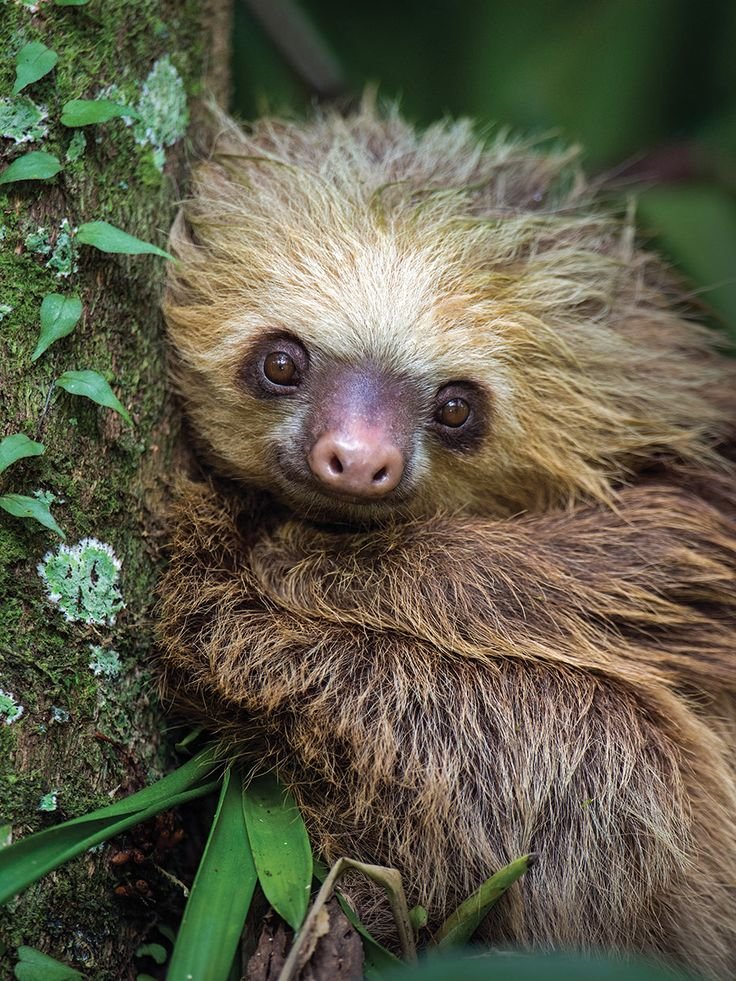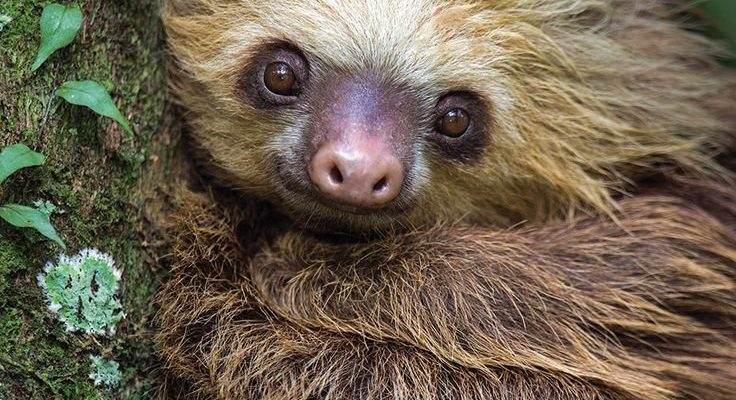
Imagine being a young sloth learning to balance on branches while munching on the occasional leaf—trust me, it’s not as easy as it sounds! The bond between a mother sloth and her child can be compared to a cozy partnership, where the mom provides constant care while giving her little one the space to grow. Let’s dive into the world of two-toed sloths and explore how they manage the tricky business of raising their young in the wild.
The Miraculous Birth of a Baby Sloth
Two-toed sloths typically give birth to just one baby at a time, which is a big responsibility. The gestation period lasts about six months, during which time the mother prepares for the arrival of her little one. Finding the right spot for this life event is crucial. Sloths often choose a secure location high up in the trees, away from predators and other dangers.
When the baby is born, it’s incredibly tiny—about the size of a fist—and fully dependent on its mother. The mother sloth will often cradle her newborn, holding it securely with her strong limbs. Here’s the thing: because sloths are generally solitary creatures, this bond is vital for the baby’s survival. The mom will make sure the baby is comfy, often wrapping it in her fur, which not only keeps it warm but also camouflaged among the leaves.
The Art of Clinging
Once the baby is born, the next big challenge is learning to cling to its mom. You might be wondering, how does a baby sloth stay attached while she climbs through treetops? Well, newborn sloths are born with a remarkable grip. Their little claws make it easy for them to latch on to their mother’s fur. It’s almost like nature’s version of Velcro, allowing them to hang on tight even as she moves through the canopy.
As the days go by, the baby will spend most of its early days clinging to mom. This isn’t just about transportation; it’s a chance for the baby to observe and learn. By staying close, it picks up essential skills for climbing, foraging, and staying alert to potential threats.
Nourishment: A Sloth’s Diet for the Little Ones
Feeding a baby sloth is no small feat! In the wild, a mother’s milk is crucial during the first few months. The milk is rich in nutrients, helping the infant sloth grow strong and healthy. Sloths are herbivores, so the mother’s diet mainly consists of leaves, fruits, and flowers. When the baby is weaned, usually around five months old, it will begin to nibble on the same leaves its mother eats.
Here’s an interesting tidbit: sloths often choose leaves that are low in toxicity. This instinct helps protect their young, as many trees have leaves that can be harmful. The mother will instinctively guide her baby to safe feeding spots, showing it which leaves are appropriate to munch on.
Learning to Explore
Now that the baby is weaned, it’s time to learn how to explore its treetop home. This part of a sloth’s upbringing involves a lot of cautious adventures. Following closely behind its mother, the young sloth will take its first few tentative climbs. The experience is both thrilling and a little nerve-wracking.
Sloths aren’t just tackling the heights, though; they also learn important survival skills during these exploration lessons. For instance, they observe how their mother navigates through branches, how she chooses safe places to rest, and how she identifies potential dangers. You can imagine it as a little sloth doing a slow-motion obstacle course, with mom leading the way.
Life Skills: Building Independence
As the baby sloth grows older, around 10 to 12 months, it will start to venture out on its own. But don’t think for a second that it’s just ready to go solo! This transition is filled with lessons about independence and survival. The mother sloth encourages exploration but also remains nearby, creating a safe space for her little one to test its newfound skills.
During this time, the young sloth might experiment with climbing higher or trying new types of leaves to eat. If it gets too far away, the mother will call it back, reinforcing that safety is still essential. The bond they share continues to be strong even as the baby learns to navigate the world independently.
Safety in Numbers: A Unique Social Aspect
While sloths are mostly solitary, they do have a few unique social behaviors, especially when it comes to raising young. Sometimes, multiple mothers will use the same trees to rear their young. This way, the babies can play and learn from each other, adding another layer of safety. Imagine a small group of baby sloths awkwardly climbing together, forging friendships—their little personalities really start to shine!
This social aspect is beneficial; it allows the young ones to hone their skills with peers while also providing extra eyes to watch for predators. It’s a blend of teaching and protecting, all while fostering connections between the babies and their mothers.
The Long-Term Bond Between Mother and Young
Even after the baby sloth has become more independent, the bond between mother and child remains strong. Unlike some animals that abandon their young, mother sloths typically stay connected for a while longer. The young ones may continue to rely on their mothers for guidance well into their second year of life.
During this time, the mother will still play a role in teaching her child the ropes of sloth life. You might see the two sharing the same tree, with the young one practicing its climbing skills while still keeping close to mom. This long-term connection is part of what makes raising a baby sloth so special—it’s a unique mix of nurturing and independence.
In conclusion, two-toed sloths raise their young through a beautiful blend of care, exploration, and connection. From the moment a baby is born, the mother’s dedication to teaching and protecting her child is evident. As these adorable creatures navigate their lush, leafy homes, the experiences they share create a bond that lasts a lifetime. Watching this process unfold in the wild is like witnessing a slow-paced familial dance among the treetops—one that’s both heartwarming and essential for the survival of their species.

